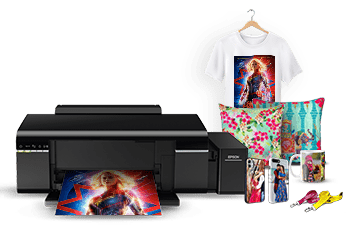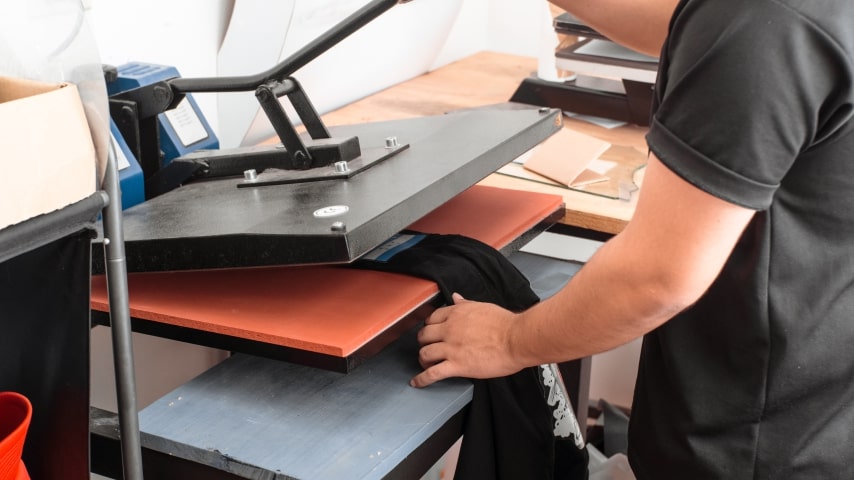Check Out the Best Branded Clothing for each Celebration and Design
Check Out the Best Branded Clothing for each Celebration and Design
Blog Article
A Comprehensive Guide to the Various Types of Fabric Printing Techniques
Starting an expedition of cloth printing methods discloses a remarkable crossway of practice and advancement. Each approach, from the meticulous craftsmanship of block printing to the quick efficiency of screen printing, offers one-of-a-kind purposes and provides unique advantages. Digital printing's adaptability and environmental awareness stand in raw contrast to the swift personalization of heat transfer printing. Color sublimation printing mesmerizes with its capacity to generate lively, enduring layouts on synthetic materials. To genuinely realize the subtleties and possible applications of these varied strategies, a much deeper investigation is essential.
Block Printing
Block Printing, one of the oldest methods of textile design, has a rich history that goes back to old human beings. Stemming in China around 220 A.D., this strategy later spread to India and eventually Europe. The procedure entails sculpting elaborate designs into wood blocks, which are after that dipped in dye and pressed onto material to develop patterns. This technique is noteworthy for its ability to produce very described and repeated designs.
The accuracy and craftsmanship associated with block printing make it a labor-intensive procedure, but it additionally enables for a high level of modification. Artisans can produce unique patterns by incorporating different blocks or differing the application of dye. This versatility has added to the long-lasting popularity of block printing in both modern and traditional fabric design.
Block printing is specifically valued for its aesthetic top qualities, consisting of the minor variations in pattern and shade that result from the hand-printing process. These blemishes lend an unique character to every piece, identifying it from mass-produced fabrics. Regardless of developments in modern printing innovations, obstruct printing remains a valued technique, celebrated for its historical relevance and creative value.
Display Printing
Screen printing, an additional prominent textile decor technique, has reinvented the sector with its efficiency and adaptability. This approach involves developing a pattern, known as a screen, and utilizing it to use layers of ink on the printing surface area. Each color in the design calls for a separate screen, which enables dynamic and complex multi-colored prints.

One of the essential advantages of screen printing is its versatility to different kinds of materials, consisting of cotton, polyester, and blends. This method is specifically appropriate for large-volume orders as a result of its cost-effectiveness and rate. The sturdiness of the prints is one more considerable benefit, as the ink bonds well with the material, guaranteeing lasting designs that endure multiple washes.
The process starts with preparing the displays by coating them with a light-sensitive emulsion. Once dried out, the layout is transferred onto the emulsion-coated screen using a UV light resource. The revealed locations harden while the unexposed parts are removed, producing a stencil. Ink is then pushed through the stencil onto the textile making use of a squeegee.
Screen printing is extensively utilized in the garment industry, advertising products, and custom clothing. Its capability YOURURL.com for premium, detailed prints safeguards its condition as a cornerstone strategy in textile printing.
Digital Printing
Digital printing has actually quickly become an advanced strategy in the textile sector, leveraging sophisticated technology to generate high-resolution designs straight onto fabric. Unlike typical techniques, electronic printing utilizes inkjet printers to down payment pigment or dye-based inks onto textiles, making it possible for lively and intricate patterns with an impressive degree of information and shade accuracy.
One of the main benefits of electronic printing is its adaptability. This method enables for on-demand printing, which substantially lowers waste and minimizes stock go now expenses.
Additionally, electronic printing is eco-friendly. DTF printing. It utilizes water-based inks and needs much less water and power contrasted to standard strategies, straightening with lasting techniques. The accuracy of electronic printing additionally allows using a bigger variety of textiles, consisting of cotton, silk, polyester, and blends, ensuring versatility across numerous applications
Warmth Transfer Printing
How does warmth transfer printing transform textile design? Warmth transfer printing involves making use of heat and stress to transfer a layout from a specially developed paper onto material.
Among the key advantages of warm transfer printing is its capacity to create high-quality, thorough images promptly and effectively. It is specifically well-suited for little manufacturing runs and custom-made orders, making it a preferred choice for individualized apparel and marketing things. Additionally, this technique is functional, accommodating different kinds of fabrics including cotton, polyester, and blends.
Additionally, warmth transfer printing is relatively economical contrasted to various other methods, as it requires very little arrangement and lower preliminary financial investment - screen printing. This price, paired with its capacity for producing dynamic, long lasting prints, emphasizes its pivotal role in modern material layout

Dye Sublimation Printing
Dye sublimation printing, a sophisticated material printing technique, provides unparalleled vibrancy and long life for styles on numerous artificial materials. The printed transfer paper is after that put on the fabric, and both are subjected to high warmth and stress using a heat press.
One of the essential benefits of dye sublimation printing is its capability to produce continuous-tone prints with detailed details and lively shades. Unlike other printing techniques, the color becomes component learn the facts here now of the textile rather than sitting on top of it, resulting in a breathable and soft finish.
Conclusion
Block printing is prized for its artisanal top quality, while display printing is useful for high-volume manufacturing. Digital printing gives convenience and ecological advantages, whereas warmth transfer printing is suitable for rapid customization.
Each method, from the careful craftsmanship of block printing to the fast performance of display printing, serves unique purposes and uses distinctive benefits. Digital printing's versatility and ecological awareness stand in plain comparison to the swift customization of heat transfer printing. Regardless of advancements in modern printing technologies, obstruct printing stays a treasured technique, commemorated for its historical importance and artistic worth.
Dye sublimation printing, an advanced fabric printing method, provides unmatched vibrancy and long life for styles on different synthetic fabrics. Digital printing offers flexibility and ecological advantages, whereas heat transfer printing is ideal for quick personalization.
Report this page